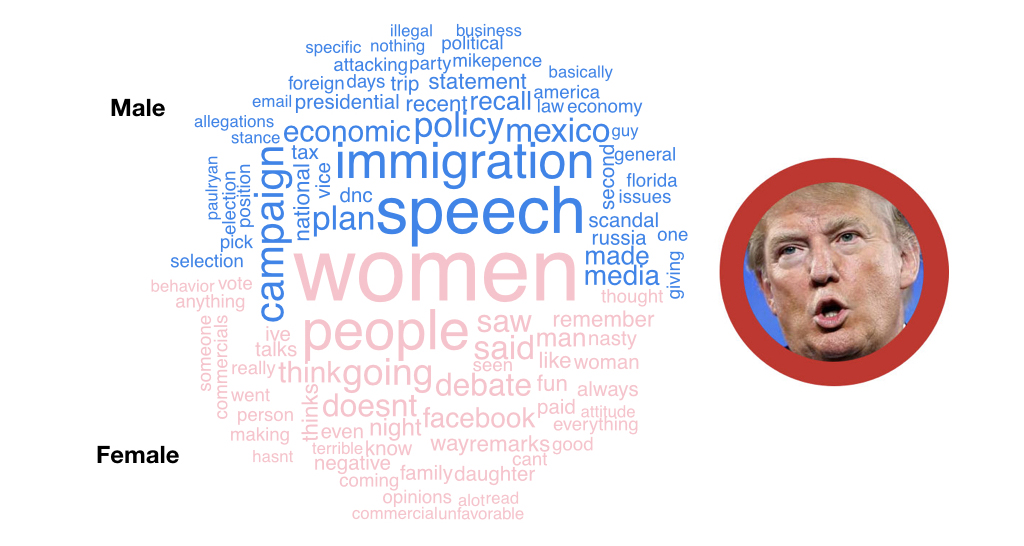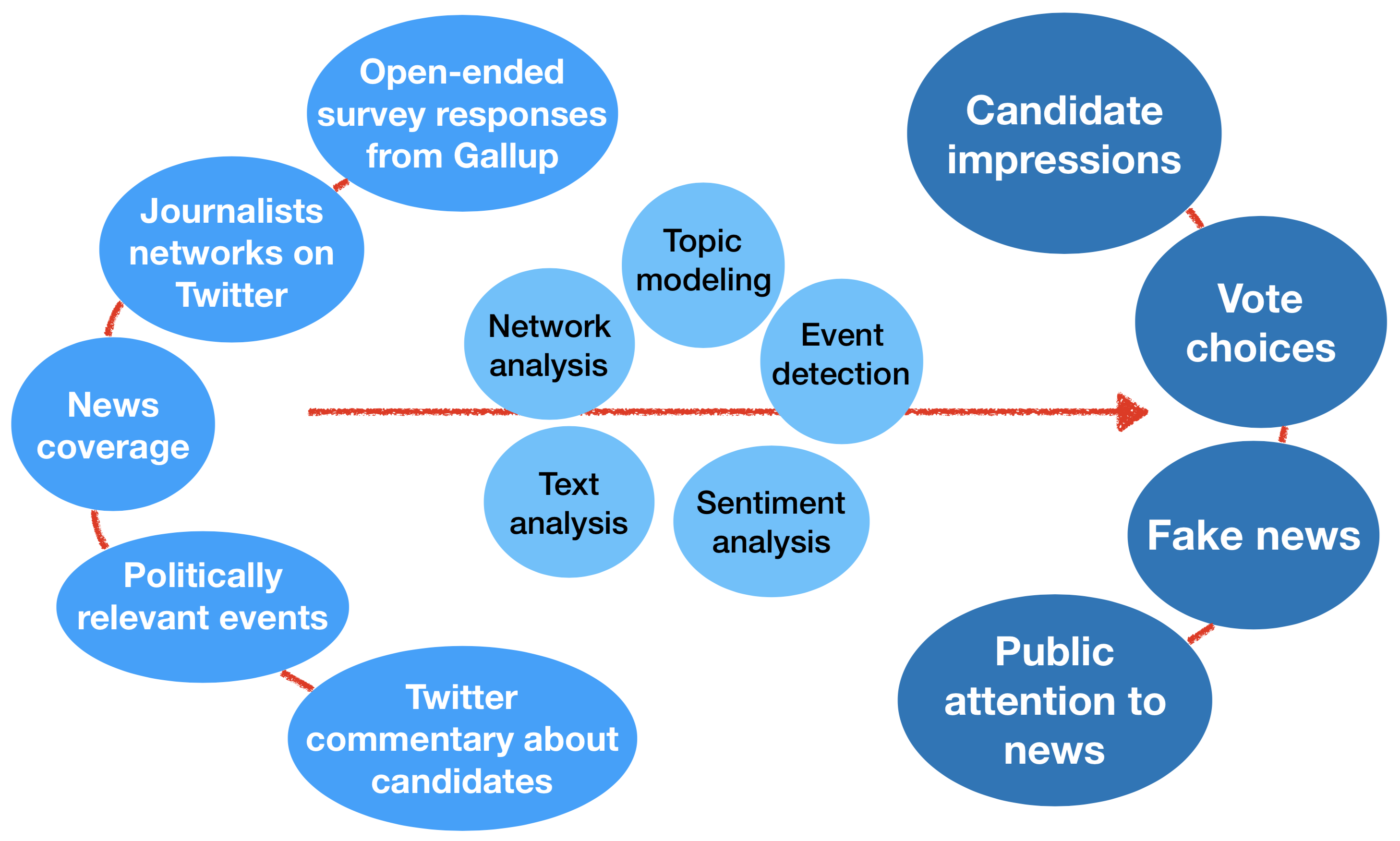Political Communication
The political communication project studies how impressions of political candidates are formed by focusing on the role of media representations of them in conjunction with discussions on social media.
There are two distinct components to this research: understanding information that ‘sticks’ with the public, and an examination of how news coverage and Twitter commentary affect citizens’ impressions of the candidates.
Elite behavior in the media
In the analysis of elite behavior, researchers focus on the news content in the mainstream media for two weeks leading up to specific campaign events as well as two weeks after. They examine the construction of the news through journalists’ interactions with each other, prior to, during and after important campaign events through Twitter, the platform journalists now see as an essential part of their job.
The effect of news and commentary on citizens
To address how news coverage and Twitter commentary affect the way citizens see candidates and choose which ones to vote for, the study team has partnered with Gallup, who interviewed a rolling cross-section of 500 American adults daily over the period from July 10 to November 8, 2016, selected via a probability sample of cell and landline phones. By analyzing this data, researchers assess how changing events shaped citizens’ perception of the candidates over time.




